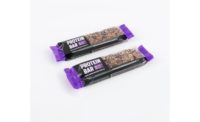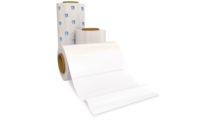Barrier properties shown by carrot-based edible films exhibit potential for use as packaging across various food categories, according to recent research from China.
A study from Jilin University in China says that the production of composite edible film with carrot puree was examined in terms of how levels of the other components, namely carboxymethyl cellulose (CMC), corn starch and gelatin affected the film’s mechanical and barrier properties.
The team said carrots were targeted because of their nutritional value and that few products based on the carrot had been developed.
Carrots are primarily water, protein cellulosic substances and pectic, and adding these components could lead to the formation of an economical and biodegradable film, according to the researchers.
“Obtaining films with good oxygen permeability and desirable mechanical properties would indicate possible use of carrot as an alternative source of packaging,” they added. “Carrot films may have the potential to be commercial because they can be used as food or food packaging.”
The study, called “Barrier and Mechanical Properties of Carrot Puree Films,” was published in the journal ofFood and Bioproducts Processing. Researchers indicated that varying the concentration of the components altered the properties of the film. “Generally, films made from polysaccharides, such as starches, gelatin and cellulose derivatives, are expected to be excellent oxygen barriers because of their tightly packed, ordered hydrogen-bonded network structure and have high tensile strength,” the study notes.
A plasticizer was added after it was discovered the carrot films were too brittle on their own. The film was produced by heating corn starch in a way as to obtain “starch gelatinization.”
Source: www.foodproductiondaily.com
Get our new eMagazine delivered to your inbox every month.
Stay in the know on the latest snack and bakery industry trends.
SUBSCRIBE TODAY!Copyright ©2024. All Rights Reserved BNP Media.
Design, CMS, Hosting & Web Development :: ePublishing




